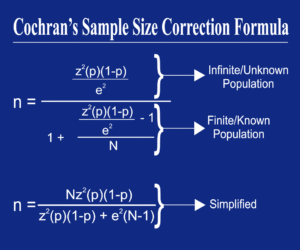ACADEMIC PROJECT
What is an Academic Project?
 An academic project is a formal document whose major sections include an abstract, introduction, literature review, methodology, results, discussion, and conclusions and recommendations. The process of writing and presenting an academic project is guided by certain rules. These rules may vary depending on the level of education, institution, or the supervisor. OpenBook offers high standard academic project writing services strictly following the rules provided in order to represent the students’ contribution to the body of knowledge.
An academic project is a formal document whose major sections include an abstract, introduction, literature review, methodology, results, discussion, and conclusions and recommendations. The process of writing and presenting an academic project is guided by certain rules. These rules may vary depending on the level of education, institution, or the supervisor. OpenBook offers high standard academic project writing services strictly following the rules provided in order to represent the students’ contribution to the body of knowledge.
Formulating a Project Title of a Project
A comprehensive project title should be brief and must identify the population of interest, and the independent and dependent variables. Students should also adhere to the stipulated requirements related to the length of the project title.
Preparing an Abstract
An abstract should provide a summary of the academic project. Generally, an abstract is placed before the table of contents. A comprehensive abstract should highlight all the essential aspects of the project. Students should be cautious not to exceed the required length of the abstract that is estimated at 150-250 words. A comprehensive summary should highlight the project’s hypothesis, objectives, methodology, and findings.
Guidelines for Writing the Introduction
In the introduction section, the student should highlight the problem area and discuss its significance. A comprehensive introduction should contain the research questions, objectives, and hypotheses that will guide the academic project. Students should distinguish an introduction from a literature review. Whereas the introduction utilizes existing literature to highlight a problem area, the section does not synthesize the referenced studies.
Conducting a Literature Review
 Literature review forms the second chapter of dissertations and theses. A comprehensive literature review highlights students’ ability to identify relevant scholarly works and synthesize their findings. Literature reviews should utilize current articles to inform future readers of the existing knowledge and establish a context for conducting their intended academic projects. The contents of a literature review should correlate to the formulated hypothesis and research questions. For example, an academic study may be intended to improve on the existing knowledge related to the implementation of bed alarms as a fall prevention intervention. Consequently, the accompanying literature review should synthesize the current knowledge related to the utilization of bed alarms in hospital settings. A student should highlight the existing knowledge gaps in the available literature that justify the proposed academic project. For instance, previous studies may have investigated the influence of bed alarms in preventing falls among geriatric patients. A student may identify a need to narrow the focus of their research to geriatric patients who have been diagnosed with chronic mental illnesses. A comprehensive literature synthesis should highlight the existing knowledge gap related to the limited studies that focused on a specific population.
Literature review forms the second chapter of dissertations and theses. A comprehensive literature review highlights students’ ability to identify relevant scholarly works and synthesize their findings. Literature reviews should utilize current articles to inform future readers of the existing knowledge and establish a context for conducting their intended academic projects. The contents of a literature review should correlate to the formulated hypothesis and research questions. For example, an academic study may be intended to improve on the existing knowledge related to the implementation of bed alarms as a fall prevention intervention. Consequently, the accompanying literature review should synthesize the current knowledge related to the utilization of bed alarms in hospital settings. A student should highlight the existing knowledge gaps in the available literature that justify the proposed academic project. For instance, previous studies may have investigated the influence of bed alarms in preventing falls among geriatric patients. A student may identify a need to narrow the focus of their research to geriatric patients who have been diagnosed with chronic mental illnesses. A comprehensive literature synthesis should highlight the existing knowledge gap related to the limited studies that focused on a specific population.
Guidelines for Writing the Method/Approach Section
The methodology section should contain a discussion of the design and project implementation plan. The method section should be detailed and comprehensive to promote replicability. A project’s methodology comprises the intended population, setting, instrumentation, data collection, data analysis, and ethical considerations. A subsection may be introduced to discuss the formulated project procedure. The procedure should highlight all the executed steps and treatments performed on the independent variables to study the changes in the dependent variables. The methodology section should also highlight the proposed data analysis techniques. Students should identify the software used and data analysis tests conducted to guarantee the replicability of their academic projects.
Guidelines for Writing the Findings and Discussion Sections
The length of the findings section often varies between qualitative and quantitative projects. The findings of a qualitative study may be lengthy because of the need to discuss the identified themes and their correlation to the formulated research questions. In the case of quantitative research, the findings ought to be tabulated because they fundamentally comprise statistics. The findings section should be followed by a discussion of the implications of the concluded academic project. The discussion section explains the observed outcomes. A comprehensive discussion should highlight the identified limitations and provide a basis for conducting future studies.
Factors to Consider When Writing an Academic Project
 Students may sometimes have several ideas on their academic project but no specific research question. Our writers, therefore, come in handy to help you identify a topic that will address specific research questions. They do so by thoroughly examining previous Scholarly sources to identify areas that need further research. After identifying a topic, the next important stage is to refine your topic to bring out what issue you are investigating. Our writers offer expert help to enable you bring out your argument and clearly outline the problem or gap you want to address.
Students may sometimes have several ideas on their academic project but no specific research question. Our writers, therefore, come in handy to help you identify a topic that will address specific research questions. They do so by thoroughly examining previous Scholarly sources to identify areas that need further research. After identifying a topic, the next important stage is to refine your topic to bring out what issue you are investigating. Our writers offer expert help to enable you bring out your argument and clearly outline the problem or gap you want to address.
Conducting literature review is an important step in project writing. You need to be able to demonstrate why your research is important and how it will expand on knowledge in that particular field. Our company helps you conduct a literature review, which is a review of material that has already been published in relevant peer-reviewed journal articles and books. Our writers through years of experience are keen on using references that you or your supervisor recommended and that are most recent and relevant to your project. There are ethical considerations for all academic projects regardless of methodology. When offering help in writing academic projects, our writers help you strengthen your project by addressing ethics that govern project writing. Our writers understand that academic projects that do not observe ethics may be rejected.
Why Seek our Project Writing Services?
Our writers are time conscious. We deliver your work within the given time-frame. Once you order your Project Writing Services, you can follow up the writing progress with OpenBook Project Team and communicate any changes you may like. OpenBook Project Team ensures deadlines are met. In addition, our writers are experts and will, therefore, ensure quality and integrity of your research by meeting the standard project writing requirements. Our writers avoid use of casual language in project writing as it may portray lack of expertise.
To ensure thoroughness, an editor is assigned to supervise your work after you make your project writing services order. The editor ensures your work is done thoroughly with every instruction taken into account. OpenBook Project Team is also responsible for ensuring you are satisfied with our services by following up to see if you may need any revisions on your work. OpenBook does not charge extra cost for work revision. In case you would like to make an inquiry on help in writing academic projects, feel free to contact us on whatsapp number: 2348028999115 or click
or fill out
![]()





 OpenBook Yamane Calculator (OY Calculator, 2022) is a free online sample size calculator developed to help research students or other researchers from various fields worldwide, having problem in calculation using Taro Yamane Formula manually, determine
OpenBook Yamane Calculator (OY Calculator, 2022) is a free online sample size calculator developed to help research students or other researchers from various fields worldwide, having problem in calculation using Taro Yamane Formula manually, determine 





